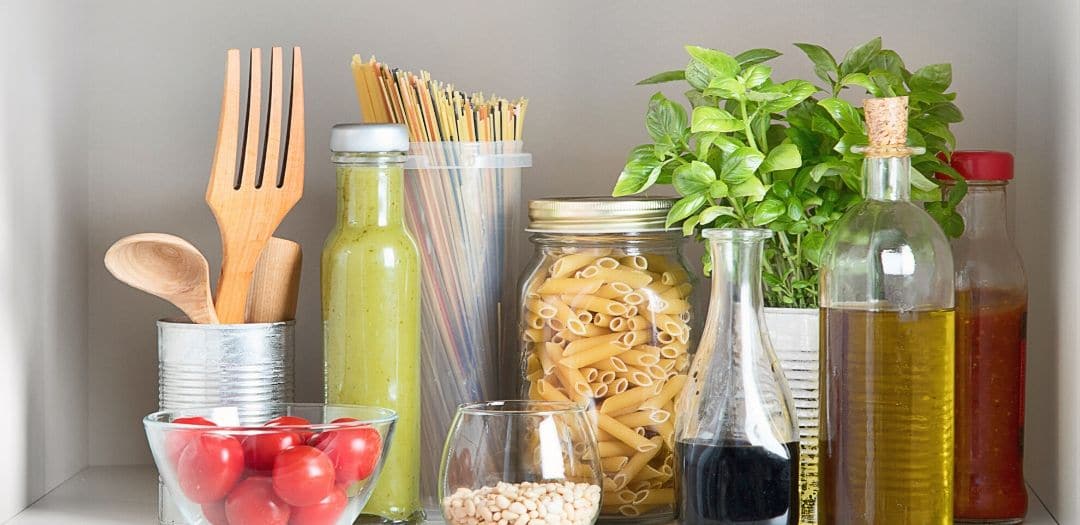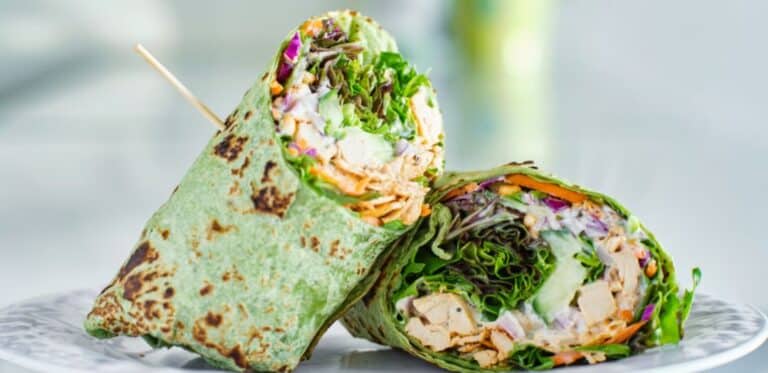The Best Emergency Food for Your Coronavirus Survival Kit
In the not-too-distant past, when the national food supply was less robust and households were more dependent on the seasonal nature of agrarian food production, the practice of having a well-stocked pantry was a familiar one. Today, many of us are used to going to the grocery store every other day for anything we can conceive of, from tropical fruit, ready-to-bake prepared foods to snacks galore.
However, the era of the coronavirus has left many of us wondering how should we fill our pantry and freezer. So here’s a list of the best emergency food for your COVID-19 survival kit:
- Dried grains and legumes
- Canned food
- Frozen food
- Long lasting fruits and vegetables
- Baking supplies
This article will give you the tools and ideas you need to enjoy healthy, delicious meals from home with minimal trips to the store, regardless of your dietary preferences.
Where to Start

Make a plan and create a recipe folder
Set aside an hour to write down your (or your family’s) favorite meals and gather your go-to recipes all in one binder (tangible or digital). Try to list at least ten breakfasts, ten lunches, ten snacks, and ten suppers.
Create a list of the ingredients necessary to make all of these meals, then highlight every ingredient that keeps for longer than two weeks. If most of the ingredients have short shelf lives, see if you can find some creative workarounds, searching Google for suggestions if needed. Aim to minimize your dependence on easily-perishable foods as much as possible.
If you live with other people, get their input
Double check with your family members or housemates before heading to the store. Confirm that they approve of your meal choices and will eat what you’re buying. It’s no good having a stock of food that no one wants! Be sure to add their requests to your list as well to keep everyone as happy and involved as possible.
Assess your current stock of food
Your goal is to have the ingredients necessary to make all of the meals on your list at least three times each (this creates a four to six week food supply, depending on portions and leftovers). Determine what you already have and what you need to buy, and ensure that your shopping list is organized according to the layout of the store.
Store your food properly
After you’ve shopped and brought your food home, be sure to store it properly (see notes throughout the rest of the article). Proper storage is key to maintaining freshness and avoiding cross-contamination. Keep your ingredients organized with the oldest purchases in the front of the cabinet or freezer and the newest purchases in the back so that you use them up in an appropriate order.

The Best Emergency Foods
While choices will vary from individual to individual and family to family, most people will do well to focus on these tried-and-true staples.
Dried Grains and Legumes
This is the category of non-perishable food that humans have relied on the longest to get them through difficult times. From native people groups in North America to tribes in Africa, for centuries almost every human culture has grown and dried grains and legumes for later consumption. We’re lucky to be able to simply drive to the store and buy bags of rice (white and brown), dried beans, lentils and peas, and trendier options within this same family of foods like quinoa, barley, and wild rice.
Dried grains and legumes keep for years, they’re versatile and energy dense (one cup of dried rice equals 600 calories, while one cup of cereal is typically around 200 calories). [1]
Bags of grains and legumes are easy to tuck into the corner of a pantry or closet. Just make sure they’re in airtight, moisture-free storage and slightly elevated away from the floor to keep bugs and pests out. Temperatures of 70 degrees or cooler are ideal. [2]
A simple meal of beans and rice can be delicious and satisfying with the addition of other non-perishable food items like hot sauce, canned tomatoes and corn, and dried herbs. Or if you have fresh produce available, whip up some homemade guacamole or pico de gallo.
Canned Food
When most people think emergency prep, they think of canned food. This makes sense – you can find everything from canned meat to canned peaches, and these foods are cheap, easy to store, and keep for at least a year.
If you’re looking for the best canned food for survival, focus on versatility and nutrients. A can of soup will feed you for a day, but it’s likely high in sodium and low in protein and vitamins. Instead, you could buy canned corn, tomatoes, chicken, and add fresh onion and garlic to make your own soup that’s more nutritious and tasty. Select healthy canned food if you can afford it by choosing organic, BPA-free, and low-sodium options.

Frozen Favorites
If you have a larger freezer (or a backup freezer) it can be an incredible resource during homebound times. Here are some easy ways to make your freezer an indispensable part of your survival food kit:
- Every time you cook something, make a double batch and freeze one batch for later.
- Stock up on frozen convenience foods like pizza, burritos, and toaster waffles for when you can’t bear the thought of cooking or doing dishes for a day.
- Freeze soups flat in gallon freezer bags so they don’t take up much space for storage. Defrost by submerging the bag in hot (but not boiling) water.
- Stock up on versatile meats like chicken thighs and ground beef and package them in meal-sized units before freezing.
- You can freeze bread, bagels, and other bakery products in airtight bags. Just pop them in the oven or toaster when you’re ready to eat.
- Frozen vegetables, herbs, and fruit are just as nutritious as their fresh counterparts and they’re easy to incorporate into soups, smoothies, and stir fries for added nutrition and fiber.
Long Lasting Fruit and Vegetables
No emergency stock is complete without a generous supply of long-lasting fresh fruits and vegetables. Buy plenty of apples, citrus fruit, carrots, and cabbage and keep them cold. They should stay good in the refrigerator for 1-2 months.
Squash, potatoes, onions, garlic, beets, parsnips, and turnips can be kept at cool room temperature for 1-3 months if stored correctly. Make sure they’re in breathable mesh or paper bags (no plastic!) and store different types of produce in separate areas. When next to each other, some produce, like onions and potatoes, release gases that cause them to rot more quickly.
Baking Supplies
Shelf-stable baking supplies like flour, cornmeal, oil, sugar, baking soda, canned pie filling, and evaporated milk stay good for at least a year and are simple to turn into homemade treats with the addition of a couple of fresh ingredients. And don’t forget that some refrigerated ingredients like eggs, buttermilk, and butter stay fresh for a while too or can be frozen easily.
Once you’ve stocked your home with a selection of healthy, emergency-friendly foods, you can use your recipe binder and meal list to make a meal plan at the beginning of each week. Having a structure laid out for your weekly meals will help you use your supply more effectively. Post your meal plan somewhere where the people you live with can see it so they can easily help out with cooking and baking tasks.
While the coronavirus presents a new and challenging season for all of us, we can do our part by minimizing grocery store trips and cooking nourishing food for ourselves and our loved ones.
References
- CalorieKing.com (March 30, 2020) | Calories in Mahatma White Rice, uncooked
- UsaEmergencySupply.com (March 30, 2020)| Storage Life Of Dry Foods






